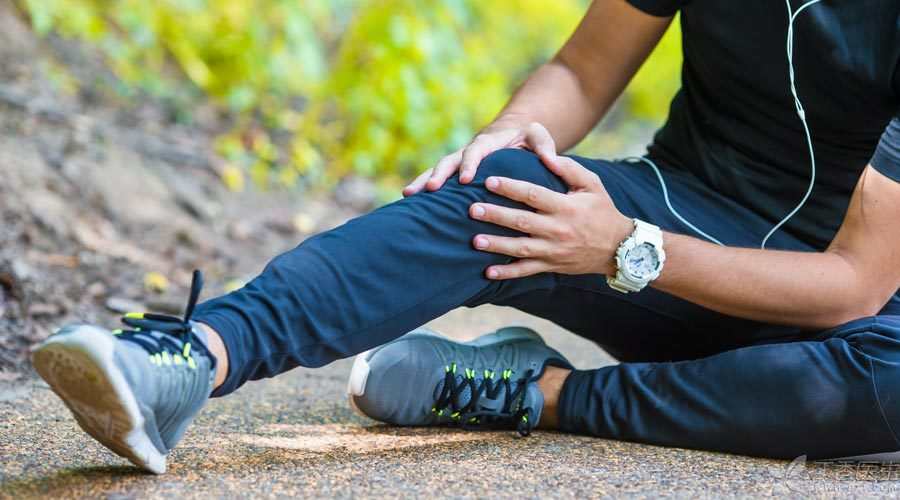
In fact, there is no clinical expression of running knee, because [running knee] mostly occurs during running, which is called running knee.
In medicine, this kind of running knee is mostly [iliotibial band syndrome], which used to be a common sports injury for runners, walking races and cyclists. However, today, when the whole people actively participate in sports exercises, ordinary people will also be troubled by this problem.
Is what iliotibial band syndrome?
The iliotibial band is a long and strong ligament that covers the entire lateral thigh. The [iliac] finger ligament mainly originates from the anterior superior iliac crest of the pelvis at the top of the thigh, while the [tibial] finger ligament ends at the upper end of the lower leg. The iliotibial band ligament can protect the knee and thigh joints from protruding outward during movement.
As we bend and straighten our knee over and over again, For example, when running, the iliotibial band will rub against the surrounding bone tissue, especially the small nodules protruding from the thigh bone repeatedly. After repeating tens of thousands or even hundreds of thousands of times, the fascia tissue may become inflamed and edematous. What you can feel is swelling and pain on the lateral side of the knee, which is the main cause of iliotibial band syndrome.
In addition, iliotibial band syndrome can also be caused by insufficient warm-up before exercise, sudden increase in exercise intensity and time, [O] legs, etc.
Attention should be paid to minor problems and major hidden dangers.
The appearance and progression of symptoms of iliotibial band syndrome caused by exercise strain have a gradual process:
-
At first, it was only a slight stabbing pain on the lateral side of the knee when starting exercise, and the symptoms could disappear after a little warm-up exercise.
-
After that, when exercising, there will be pain all the time, and the degree of pain will be heavier than before.
-
Obvious swelling and tenderness appeared on the lateral side of the knee.
Downhill, sitting with knees bent for a long time, standing on one leg, etc. will induce or aggravate pain.
What should I do if I get iliotibial band syndrome?
Step 1 Rest
Reduce the intensity of running or cycling. If there is still pain, these exercises that cause or aggravate iliotibial band syndrome must be completely prohibited.
However, it is not that you cannot exercise at all. You can do exercises that stimulate the iliotibial band less, such as swimming. You can also wear knee pads during exercise to protect and warm your knees.
Step 2 Relieve symptoms
- Ice Pain Area: Ice is applied every 2 to 3 hours for 15 minutes. If the ice comes into direct contact with the skin, it is easy to cause frostbite. Wrap ice cubes with towels and then apply cold compress to the affected part. Use painkillers as appropriate: You can take ibuprofen, Tylenol and other painkillers when needed. Pay attention to the possible risks of using painkillers for people with a history of heart disease, hypertension, renal insufficiency, digestive tract ulcer or hemorrhage. You should consult a doctor before using them.
3. Stretch iliotibial band to strengthen leg and hip muscle strength
Stretching exercise can increase ligament toughness, muscle strength exercise helps stabilize knees and better control iliotibial band expansion.
Here are some simple exercises:
(1) Stretch iliotibial band
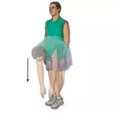
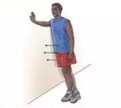
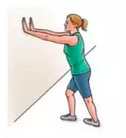
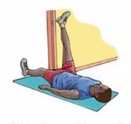
(2) Exercise muscle strength: It can better control the expansion and contraction of iliotibial band.


Note: Similar to stretching exercises, the uninjured leg is bent or flattened and the injured leg is lifted.
If conditions permit, it is best to resume exercise under the guidance of a professional physiotherapist. The physiotherapist will make exercise plans according to individual conditions, correct bad postures during running, help athletes to choose suitable running shoes, etc., and prevent repeated injuries.
You must warm up well before starting exercise. Hot compress before stretching and muscle strength exercises can relieve the pain during exercise. If the pain completely disappears during these exercises, you can gradually resume running, cycling and other activities. After the pain disappears, insisting on stretching and muscle strength exercises on both legs can help prevent iliotibial band syndrome.
4. Seek medical treatment in time
If the pain symptoms continue to worsen or do not disappear for several weeks, you need to go to a hospital. Doctors may inject hormones into the pain site or perform surgery to cut off too tight ligament tissue.
In addition to iliotibial band syndrome, there may also be lateral knee pain caused by other reasons, such as lateral meniscus injury and lateral collateral ligament injury, which require professional treatment by doctors.
